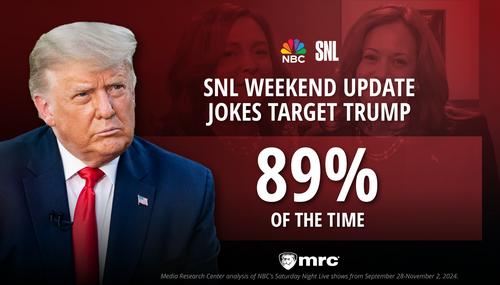The Wall Street Journal can't seem to decide whether Sarah Palin is knowledgable on monetary policy or not.
WSJ reporter Sudeep Reddy criticized Palin's "inflation hyperbole" in an article Tuesday, claiming that, contrary to Palin's claims, "Grocery prices haven’t risen all that significantly."
"Do Wall Street Journal reporters read the Wall Street Journal?" Palin shot back in a Facebook post, noting that the Journal itself had raised concerns about grocery prices mere days ago. "An inflationary tide is beginning to ripple through America's supermarkets and restaurants," an article claimed on Thursday.
Palin wrote:
Ever since 2008, people seem inordinately interested in my reading habits. Among various newspapers, magazines, and local Alaskan papers, I read the Wall Street Journal.
So, imagine my dismay when I read an article by Sudeep Reddy in today’s Wall Street Journal criticizing the fact that I mentioned inflation in my comments about QE2 in a speech this morning before a trade-association. Here’s what I said: “everyone who ever goes out shopping for groceries knows that prices have risen significantly over the past year or so. Pump priming would push them even higher.”
Mr. Reddy takes aim at this. He writes: “Grocery prices haven’t risen all that significantly, in fact.” Really? That’s odd, because just last Thursday, November 4, I read an article in Mr. Reddy’s own Wall Street Journal titled “Food Sellers Grit Teeth, Raise Prices: Packagers and Supermarkets Pressured to Pass Along Rising Costs, Even as Consumers Pinch Pennies.”…
Reddy responded on the Journal's website, and stood by his assertion.
Our post on Monday examined the assertion that grocery prices “have risen significantly over the past year or so.” That view is not supported by the facts.
A broad measure of food prices from the Labor Department shows prices rose at an average annual rate of less than 0.6% in the first nine months of the year. September’s increase in food prices — 1.4% for food and beverages at an annual rate — was low by historical standards.(In fact, the lowest average annual inflation rate on record was 1.4%, in 1992.) Commerce Department inflation data show a similarly slow year-over-year increase for food prices, 1.3%.
But while grocery inflation is not high by historical standards, it is high relative to overall inflation - i.e. prices for groceries are rising faster than prices for other goods. Ed Morrissey explains:
The problem isn’t that this current inflation rate is somehow historically large. It isn’t, as Reddy and the original WSJ article notes, although retailers are already having problems in getting consumers to purchase goods in normal quantities because of it. The point Palin made was that taking a voyage on the QE2 would make a difficult issue for consumers and retailers much worse through the deliberate introduction of even higher inflation, an explicit motivation behind the Fed’s actions.
So Palin was right once again, and once again a reporter winds up with egg on face from starting out with an assumption that Palin couldn’t possibly know what she’s talking about. Lather, rinse, repeat.
And once again we must ask, does Reddy read his own newspaper? If he does, he must avoid the editorial pages - a conservative outpost within a newsroom that trends to the left just as most do - because he clearly missed a "Review and Outlook" editorial today claiming that Palin has "a more sophisticated knowledge of monetary policy than any major Republican this side of Wisconsin Representative Paul Ryan."
The editorial, presumably written by the Journal's editorial page editor Paul Gigot, goes on to compare Palin's impact on national economic policy to that of Ronald Reagan and Jack Kemp.
And the immense praise this editorial heaped upon Palin was due entirely to her discussion of quantitative easing (otherwise known as printing more money), the practice Palin said would lead to damaging grocery inflation:
Stressing the risks of Fed "pump priming," Mrs. Palin zeroed in on the connection between a "weak dollar—a direct result of the Fed's decision to dump more dollars onto the market"—and rising oil and food prices. She also noted the rising world alarm about the Fed's actions, which by now includes blunt comments by Germany, Brazil, China and most of Asia, among many others.
"We don't want temporary, artificial economic growth brought at the expense of permanently higher inflation which will erode the value of our incomes and our savings," the former GOP Vice Presidential nominee said. "We want a stable dollar combined with real economic reform. It's the only way we can get our economy back on the right track."
Mrs. Palin's remarks may have the beneficial effect of bringing the dollar back to the center of the American political debate, not to mention of the GOP economic platform. Republican economic reformers of the 1970s and 1980s—especially Ronald Reagan and Jack Kemp—understood the importance of stable money to U.S. prosperity.




